Sustainable Krill Farm
Event Location: Cocoa-FL
Competition: Critter Comfort Cottage
Division: 6-8
School: Switzerland Point Middle
Team Name: The Sustainable
Project Name: Sustainable Krill Farm
Team Size: 2
Help me preserve the Antarctic krill and protect the Antarctic biodiversity!
Team name: The Sustainable
Name of School: Switzerland Point Middle School for Nicole H., Maclay School for Fern S., Cornerstone Learning Community for Rafael C.
Members: Nicole H. (6th Grade), Fern S. (7th Grade), Rafael C. (6th Grade), Ashweja M. (6th Grade), Nayana M. (3rd Grade)
Type of Critter: Antarctic Krill
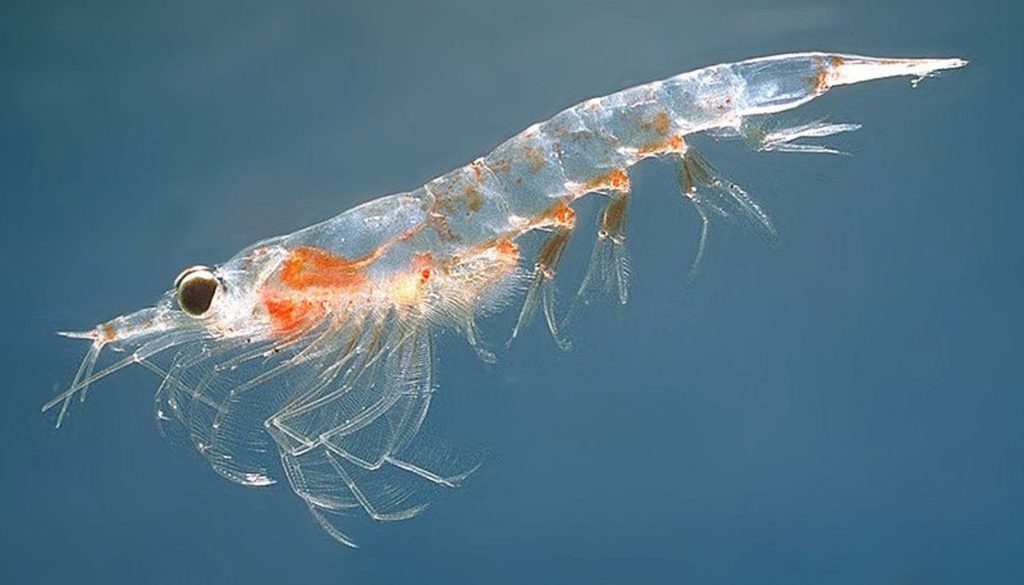
Krill is the common name for any member of the crustacean order Euphausiacea. They are in the same class of animal as crabs, lobsters and crayfish, as well as shrimp and woodlice. 82 species of krill have been described.
They grow up to about 6cm in length and can live for up to 5 years. Krill are pelagic, i.e. live in the open sea, and congregate in dense swarms of more than 10,000 individuals per cubic meters of water.

Krill feeds on phytoplankton, tiny plants capable of photosynthesis, Krill is in the bottom of the food chain in the Antarctic region.

The major problem is that the Antarctic krill is being overfished which can result in the extinction of the whole Antarctic biodiversity. The graph below shows how much tons of Antarctic krill is being fished every year:
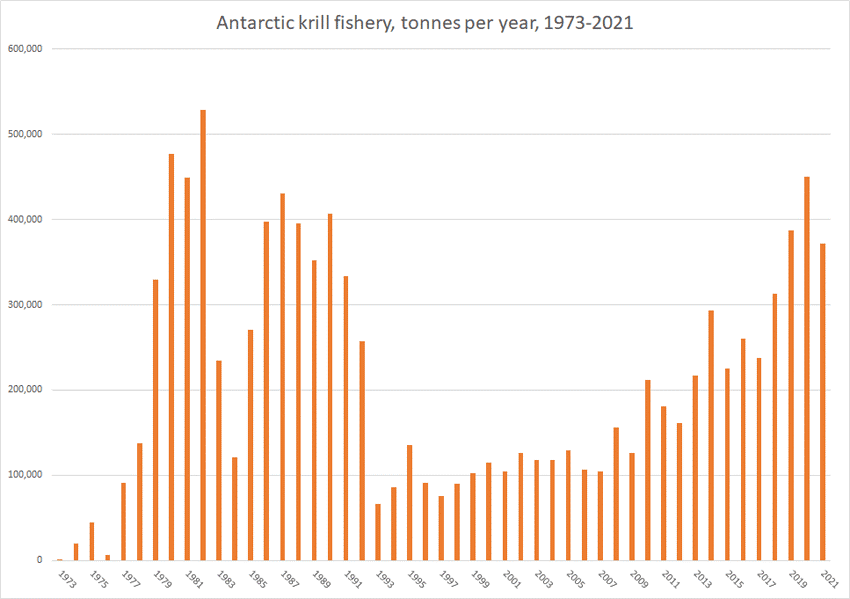
There are limits of how much you can fish the krill, but they are not counting the effects of climate change which is turning the water more acidic, increasing water temperature, and reducing the ice cover in that region. All three of these factors contribute to the reduction of the krill population. The image below show how these factors are affecting the native population of the Antarctic Krill:

If nothing is done and, at the same time, there is no reduction of Antarctic Krill fishing we are putting it in danger of extinction.
My proposal is that we create krill farms which will not put in danger the whole biodiversity of the Antarctic region. My entry in this competition is composed of two parts:
- A sustainable phytoplankton culture that will serve as the food for the krill (powered by solar energy)
- A sustainable refrigerated unit that will serve as the habitat for the krill (powered by solar energy)

The photos below show the phytoplankton culture experiment. This is very important on an Antarctic Krill farm because the phytoplankton is the only source of food for the krill. The objective of this experiment is to show that the production of phytoplankton is not complicated and it can be done at a low cost. This prototype is using solar energy through solar panels and batteries.
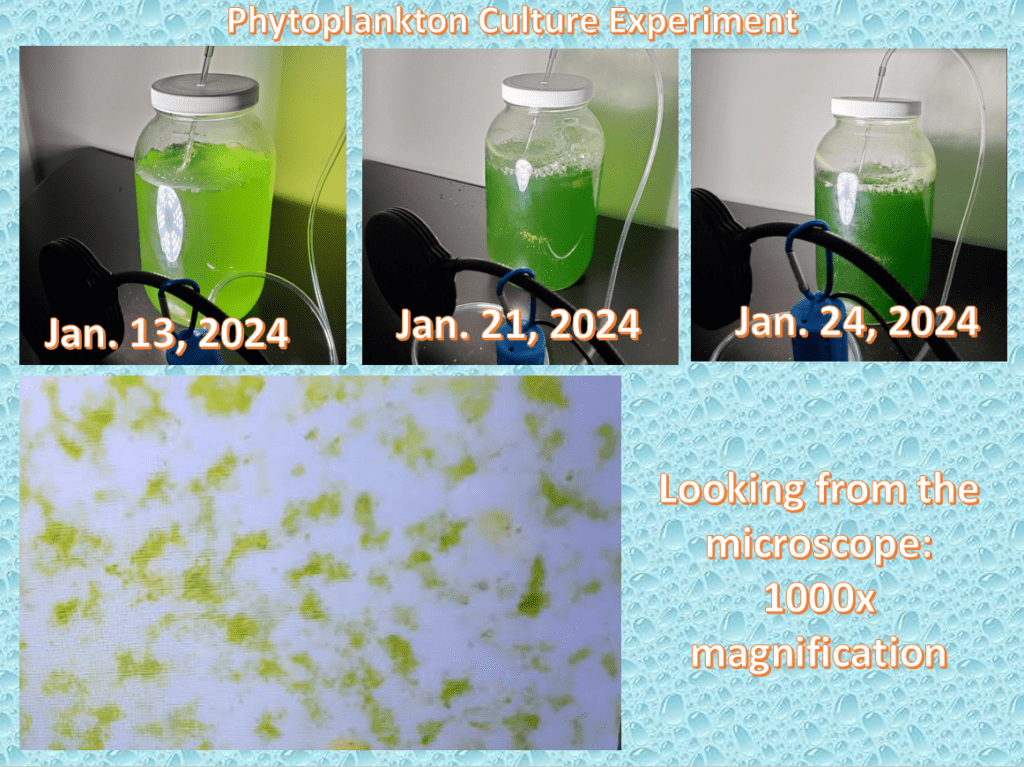
Phytoplankton is also a carbon sink, taking out Carbon dioxide dissolved in the sea water and converting it to energy which will transfer to larger animals as seen on the following diagram:
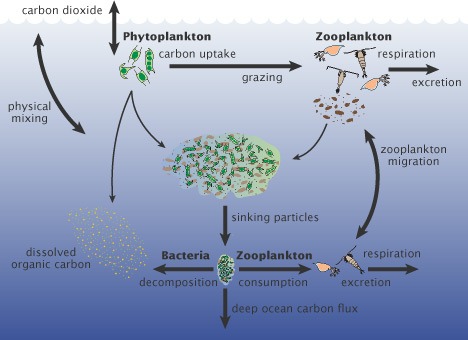
The diagram showing the phytoplankton culture powered by solar power is shown below:
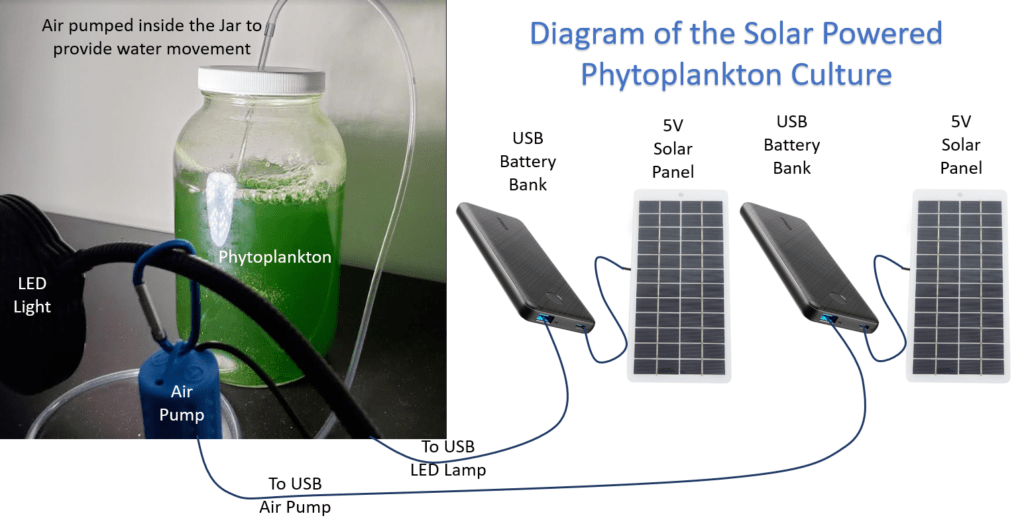
Phytoplankton is also being negatively affected by climate change as seen on the two diagram below. When water temperature goes up, phytoplankton mortality increases. When carbon dioxide dissolved in the water goes up, phytoplankton mortality also increases. This is why it is important to start thinking on cultures or farms of phytoplankton on top of the krill ones:

Diatoms on the diagram below are larger phytoplankton. They are negatively affected by carbon dioxide dissolved in the oceans.

Regarding the Antarctic Krill, I have created a prototype showing that we can create a cold environment very easily, which can be used to house the Antarctic Krill tanks. The prototype use the capability of silicon to separate the cold side from the hot side, allowing us to pump heat from an indoor location to the outside. The device is called a Peltier device as seen on the diagram below:

The prototype of the enclosure for the Antarctic Krill uses the Peltier device capability to absorb heat from one side and reject heat to the other side. The image below show our prototype:
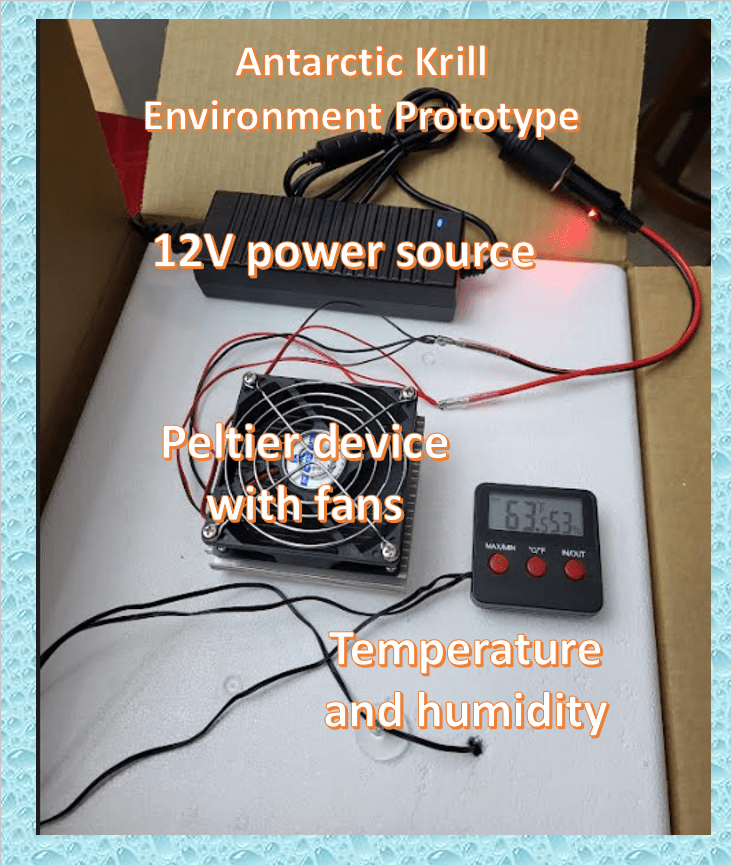
This refrigeration unit, which also uses solar panels and batteries, plus the phytoplankton culture are our entry for the EnergyWhiz Critter Comfort Cottage competition. The diagram with all connections is shown below:

The last prototype we have for the Antarctic Krill is also very important. On a sustainable environment, we want to be able to provide all the basic resources and water is one of them. We have created a water collector from thin air using the same principles of the refrigeration unit as seen on this picture:
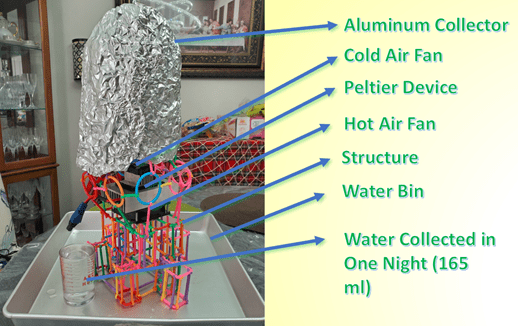
The Peltier device, this time, sends the cold air to the metallic surface at the top which creates a condensation area where the water then goes down to the receptacle below the system. We also wanted to be sustainable on this prototype so we also used solar panels and solar generators to feed it.
The following video provides some additional details about our project:
Bibliography
US National Science Foundation, Krill may be small, but they feed the world’s largest animals, available online at https://twitter.com/NSF/status/1557746302271848448This refrigeration unit
Cool Antarctica, Human Impacts on Antarctica and Threats to the Environment – Fishing, available online at https://www.coolantarctica.com/Antarctica%20fact%20file/science/threats_fishing.php
IPCC, SPECIAL REPORT: SPECIAL REPORT ON THE OCEAN AND CRYOSPHERE IN A CHANGING CLIMATE, available online at https://www.ipcc.ch/site/assets/uploads/sites/3/2022/03/05_SROCC_Ch03_FINAL.pdf
NASA Earth Observatory, What are Phytoplankton?, available online at https://earthobservatory.nasa.gov/features/Phytoplankton
SCI-184 Blog, Stirling Engines and Peltier Devices, available online at https://sites.suffolk.edu/cmstapler/2014/10/31/stirling-engines-and-peltier-devices/
Thank you for visiting our project.

Fantastic research and good engineering of both the phytoplankton culture tank and the refrigeration unit. I like the use of the peltier device for the refrigeration unit, but I wish you had added in some results from testing the device even in a small space, to be able to see the feasibility of scaling it up. I can see your vision…..this is an exceptional project!
Very impressive project and presentation! Suggest adding photo and image credits.